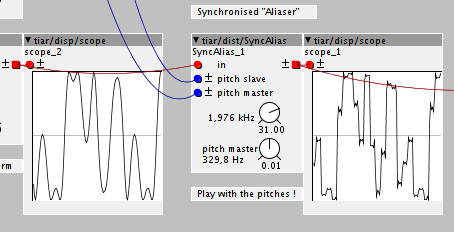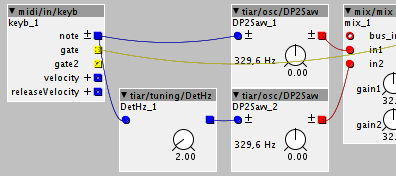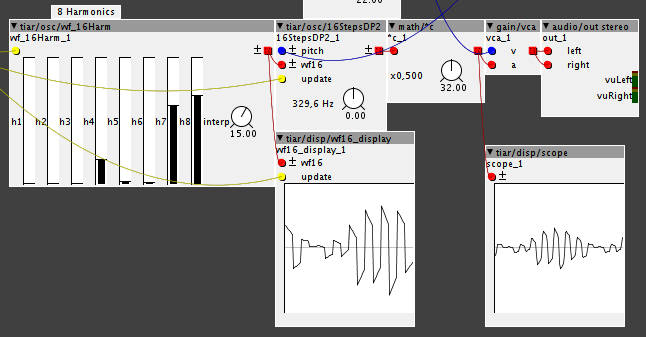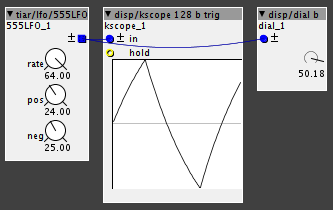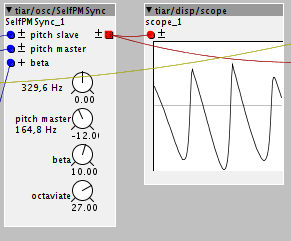Object: tiar/kfilter/median
try menu: Help -> Library -> Community -> tiar -> kfilter -> median
This is a 3 tap median filter for noisy control signals.
This can be useful if you have to deal with noisy control signals with random spikes or noise. This can be the case with some midi aftertouch controllers or when using analog inputs.
The main advantage of the median filter - compared to a low pass filter - is that it is more efficient for this kind of issue and it does not smooth the signal as much.
try the help patch to get an idea:
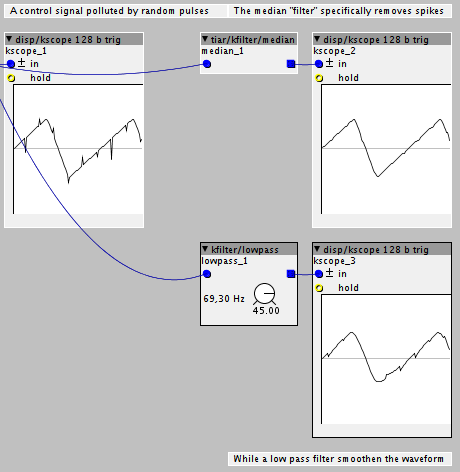
Note: median filters can be chained to process noisier control signals (when it is not possible to get cleaner signals from the hardware). Experiment and use kscope to see what it does to your control signals.
see menu: Help -> Library -> Community -> tiar -> kfilter -> medianChained.axh

